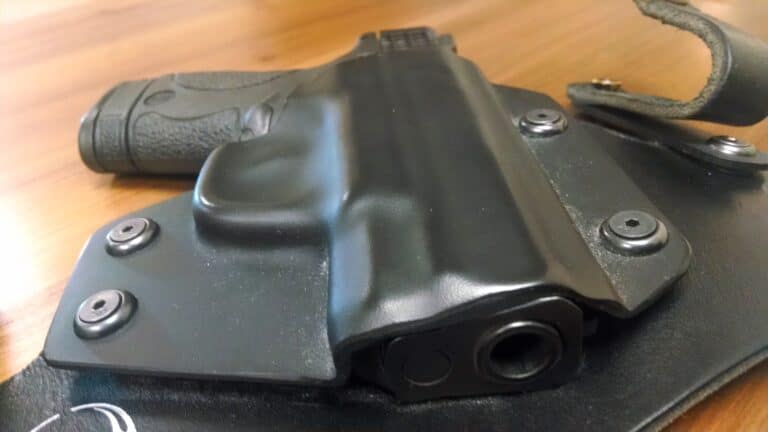On Thursday, a U.S. District Court Judge ruled that there was no valid historical tradition that would allow Texas to restrict the ability of law-abiding adults aged 18 to 20 to carry handguns in public for self-defense. It marked the first age-based gun restriction to be struck down in a federal court since the Supreme Court’s landmark gun-carry decision in New York State Rifle and Pistol Association v. Bruen.
“Based on the Second Amendment’s text, as informed by Founding-Era history and tradition, the Court concludes that the Second Amendment protects against this prohibition,” Judge Mark Pittman wrote in his order. “Texas’s statutory scheme must therefore be enjoined to the extent that law-abiding 18-to-20-year-olds are prohibited from applying for a license to carry a handgun.”
But although it was the first case to fully employ the Bruen test to do so, it was not the first federal case to uphold the Second Amendment rights of 18–20-year-olds in recent months. Indeed, federal courts had already begun to trend toward recognizing the gun rights of under-21-year-olds, something the new Bruen standard may only accelerate.
Last summer, the Fourth Circuit Court of Appeals found a federal law that prohibits the sale of handguns to 18-to-20-year-olds is unconstitutional under the balancing test courts were previously inclined to use before Bruen.
“History makes clear that 18- to 20-year-olds were understood to fall under the Second Amendment’s protections,” the court said in the ruling. “Those over 18 were universally required to be part of the militia near the ratification, proving that they were considered part of ‘the people’ who enjoyed Second Amendment rights, and most other constitutional rights apply to this age group. And Congress may not restrict the rights of an entire group of law-abiding adults because a minuscule portion of that group commits a disproportionate amount of gun violence.”
In May of this year, a three-judge panel on the Ninth Circuit struck down a blanket ban on the same age group owning most semi-automatic rifles, defined by the state as “assault weapons.” It too relied on an interest-balancing test to come to its conclusion.
“If California can deny the Second Amendment right to young adults based on their group’s disproportionate involvement in violent crimes, then the government can deny that right—as well as other rights—to other groups,” Judge Kenneth K. Lee argued in a concurrence. “For example, California arguably has a more compelling case if it enacts a similar gun-control law that targets males of all ages instead of young adults. Statistics—and science—show that men almost exclusively commit violent crimes.”
However, both pre-Bruen decisions cited the historical record heavily in their respective analyses, concluding that there existed a long tradition of keeping and bearing arms among 18 to 20-year-olds at the time of the founding. That historical tradition is now the only consideration required in deciding future Second Amendment challenges, making it all the more likely that laws excluding 18 to 20-year-olds from fully exercising the same gun rights as other age groups will continue to fall.
But that trend is starting to buck up against another one: public opinion souring on gun-rights protections for young adults.
Following a string of mass shootings this year committed by 18-year-olds in places like Buffalo, Uvalde, and Highland Park, scrutiny over granting access to firearms to young adults has started to increase. Public opinion has shifted in favor of tougher restrictions on young adults, and new legislation has been passed to do just that.
President Biden signed new gun control legislation that includes special background check requirements and a new process for 18-to-20-year-olds looking to purchase a firearm. That process now requires the FBI’s National Instant Criminal Background Check System (NICS) to contact the juvenile criminal record system in a buyer’s state, the state’s mental health record custodian, and “a local law enforcement agency” where the buyer lives to check for disqualifying juvenile records.
The length of the process essentially creates a de facto waiting period for gun sales to young adults where none exists under federal law for adults over 21.
Additionally, a new survey conducted at the end of July by the University of Chicago Harris School of Public Policy and The Associated Press-NORC Center for Public Affairs Research found 75 percent of Americans support a federal law making 21 the minimum age to purchase any firearm. That represented a four-point increase in support since 2019. 79 percent also said they supported a federal law requiring expanded background checks for gun buyers between 18 and 21, which the Bipartisan Safer Communities Act already accomplished.
A Quinnipiac poll in June found that 74 percent of Americans support raising the minimum legal age to buy any gun to 21 years old nationwide, including 59 percent of Republicans. This was from the same poll that found all-time low support for an assault weapons ban, making the findings a bit more complicated than those of a survey simply capturing broad anti-gun sentiment.
At the state level, a June 2022 poll from the Texas Politics Project at the University of Texas at Austin found that 70 percent of Texans either strongly or somewhat support raising to minimum age to buy a firearm. That in the same state where a judge just ruled that the old minimum age to carry a gun was unconstitutional.
In other words, there’s clearly some tension between the public’s attitude toward gun rights for young adults and that of the judicial system. It seems likely to be exacerbated as future challenges continue to be filed and courts apply the Bruen standard to various laws.
To be clear, public opinion on matters of constitutional law is often fickle and not always relevant to what the correct outcome of a case should be. At the end of the day, the Constitution was designed to place certain rights “beyond the reach of majorities,” as former Supreme Court Justice Robert Jackson explained.
“The very purpose of a Bill of Rights was to withdraw certain subjects from the vicissitudes of political controversy, to place them beyond the reach of majorities and officials and to establish them as legal principles to be applied by the courts,” he famously wrote in the 1943 case West Virginia State Board of Education v. Barnette.
At the same time, judges are human beings and are not always as insulated from the sway of outside opinion as they should be in theory. Chief Justice John Roberts, for instance, has been known to weigh notions of the Court’s public perception in reaching decisions before.
It will be interesting to see as these trends progress whether or not gun rights for young adults becomes a major issue and whether either trend begins to break.
After all, handgun bans were once supported by a large majority of Americans but now enjoy less than 20 percent support among the public in the years following a Supreme Court decision upholding the right to own them.
Public opinion can shape the law, and the law can shape public opinion. Only time will tell which dynamic will win out with regard to gun rights for young adults.






One Response
“The Associated Press-NORC Center for Public Affairs Research” otherwise known as the “Authorized Propaganda”. How anyone can trust a poll from these cretins is beyond me.